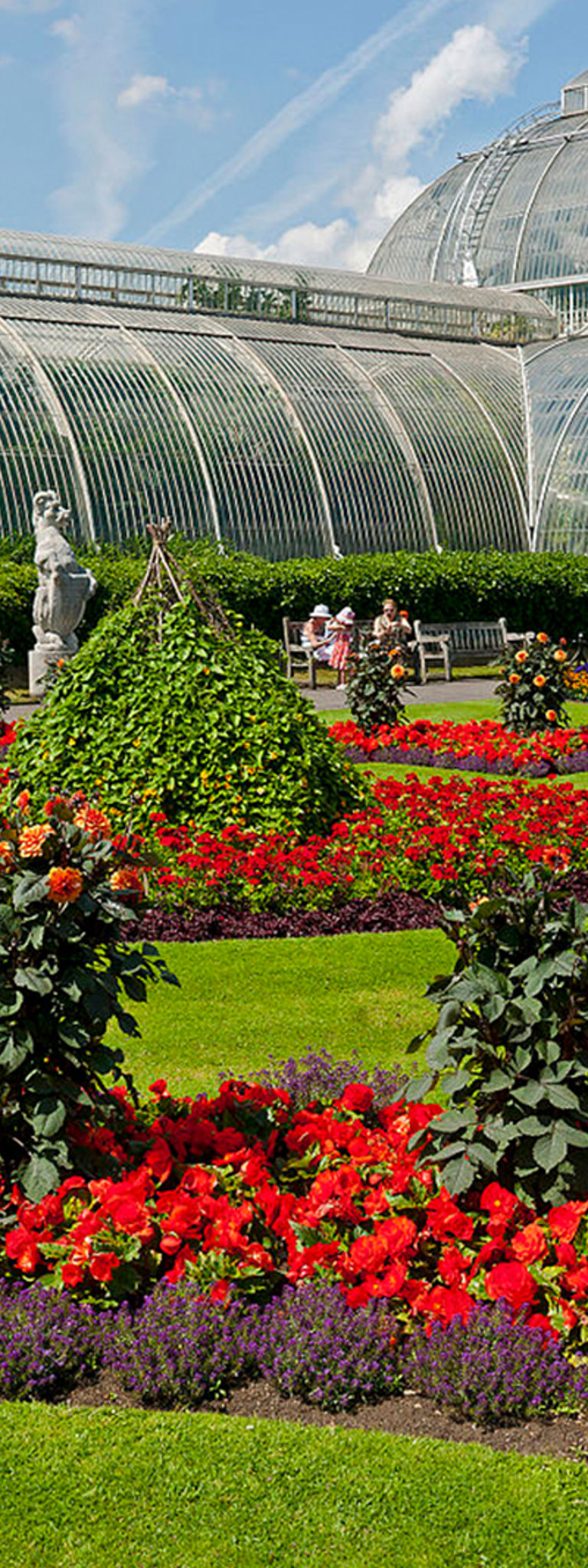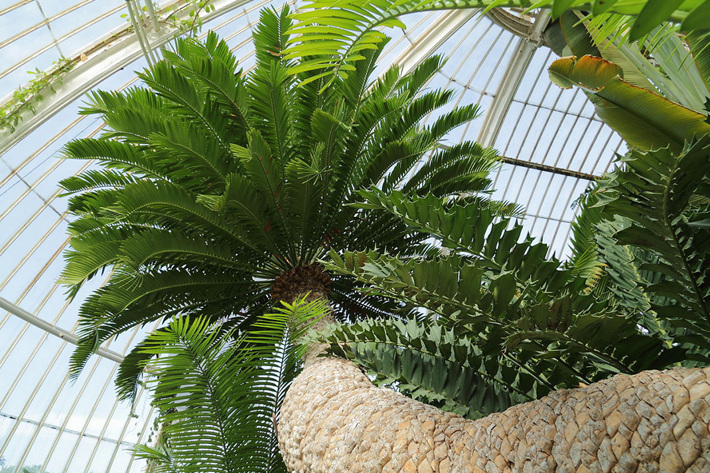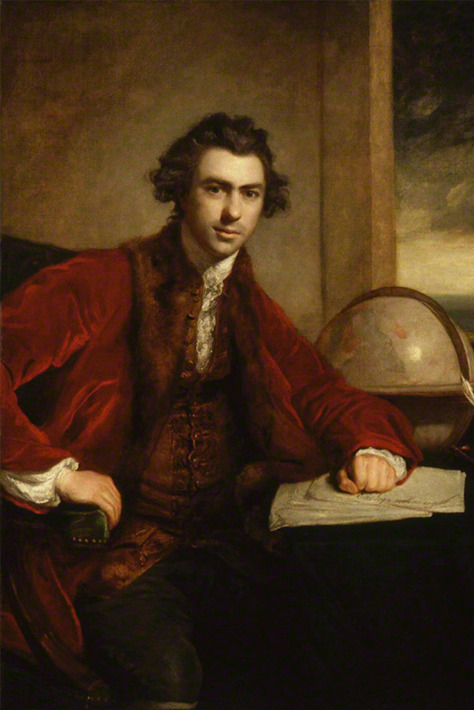
Francis Masson: Botanist and African explorer
Learn about Francis Masson's educational journey where he embarked on plant-hunting expeditions in South Africa in the 19th century.
10 Jul 2023
Learn about Francis Masson's educational journey where he embarked on plant-hunting expeditions in South Africa in the 19th century.
10 Jul 2023
Historian Jo Woolf, writer in Residence for the Royal Scottish Geographical Society, tells the story of Francis Masson - a Scottish botanist who made significant discoveries in South Africa.
At 100 Princes Street we will pay homage to Edinburgh's rich history and take inspiration from the explorers who put 100 Princes Street on the map. In design, our teams will look to create a 'sense of place', working with local artisans to create bespoke pieces and feature a mural honouring the adventures of several great Scottish explorers by Croxford & Saunders. Read more about this rich history below.
Flourishing in the warm, humid atmosphere of the Palm House at Kew Gardens is the oldest pot-plant in the world. It is an Eastern Cape giant cycad (Encephalartos altensteinii), and it belongs to a group of primitive plants called gymnosperms. Bearing palm-like fronds at the end of a four-metre-long trunk, it weighs over a tonne and leans out of its custom-made box at a precarious angle. It has been tended by gardeners at Kew ever since it arrived in Britain in 1775, lashed to the deck of a ship, having been discovered in South Africa by a Scottish botanist called Francis Masson.

Eastern Cape giant cycad in the Palm House, Kew Gardens
Little is known of Masson's early life, except that he was born in Aberdeen in 1741. However, he must have had a flair for horticulture, because as a young man he travelled south to take up a role as under-gardener to a fellow Scot, William Townsend Aiton, who was Director of the newly-established Royal Botanic Gardens at Kew.
The late 18th century was an exciting time to be a plant collector. King George III and his wife, Queen Charlotte, had a summer residence at Kew, and their passion for botany meant that they were eager to acquire newly-discovered plants for their collection. When the explorer James Cook completed his first circumnavigation of the world in 1771, the ship-load of exotic botanical specimens that were unloaded from HMS Endeavour catapulted the expedition's botanists, Joseph Banks and Daniel Solander, to overnight fame, and Banks soon became the royal advisor at Kew Gardens.

Sir Joseph Banks (portrait by Joshua Reynolds)
When the Endeavour arrived in South Africa, Banks had seen that hundreds of new plant species were flourishing in that country's remote mountains and grassy plains, just waiting to be identified and propagated for the delight of gardeners worldwide. Banks himself had been prevented from doing much exploring in the region, as he was seriously weakened by illness. Now, back home in Britain and with his energy restored, he was eager to set sail again with Cook, this time on board HMS Resolution.
But things didn't quite work out according to plan. At Banks's request, extra decks were added to the ship in order to accommodate his laboratories, his specimens and his assistants. Alarmed by the result, Cook feared that the vessel would be dangerously top-heavy, and insisted that the additions be removed before departure. Angrily, Banks withdrew from the expedition, and requested instead that a gardener from Kew be allowed to travel as far as the South African Cape, in order to collect live plants and send them back to Britain. The man assigned to this task was Francis Masson, making him Kew Gardens' first official plant hunter.
In October 1772, Masson was accordingly 'dropped off' in Cape Town by Cook, who then headed south on HMS Resolution to make the first recorded crossing of the Antarctic Circle. Meanwhile, Masson loaded his collecting-cases onto a plodding, ox-drawn wagon and set out to experience his first taste of botanising in the South African summer. A Swedish ex-soldier went with him as a guide, and an indigenous Khoekhoe man was his wagon-driver.

Crossing the River Sonderend, illustration from Journal of a Visit to South Africa in 1815 and 1816 by C I Latrobe (1818)
The terrain was daunting but spectacular. As he explored the forested slopes of the Riviersonderend Mountains, Masson struggled over 'many dreadful precipices' and gazed at waterfalls two hundred feet high, which fell ‘with awful noise.’ He wrote that he endured 'much fatigue in these sequestered and unfrequented woods with a mixture of horror and admiration.' He also noted that most of the tree species that grew there were unknown to science, and he collected their flowers so that they could be studied and described.
While this first expedition lasted only about five weeks, Masson's second plant-hunting foray took him away from Cape Town for four and a half months. This time he was accompanied by another Swede, a trained botanist by the name of Carl Thunberg. They followed the coast north-west, passing a range of mountains and crossing a sandy region of low-growing shrubs known as 'Zwart Land' (Swartland), before reaching Saldanha Bay. Here, Masson was pleased to see a 'great variety of curious plants; and in particular, a large bulbous root, growing on dry precipices, which the Dutch call vergist-boll, poison bulb.' It was the substance from this bulb, he learned, that the native people traditionally used to poison their arrows. This species, which Masson called Amaryllis disticha, is now known as Boophone disticha.

Boophone disticha or century plant
From a place called Witte Klip (White Cliff), the botanists enjoyed fine views of the coast, while beneath their feet grew a profusion of flowers 'of exquisite beauty and fragrance.' Leading their horses over the mountains in torrential rain, they reached the estuary of the Berg River and then crossed the Olifants River before turning southwards towards Swellendam.
While fording the Duiwenhoks River on horseback, Thunberg’s horse stumbled into a deep submerged pit, probably created by hippos, and both horse and rider nearly drowned. The episode was recounted by Thunberg and Masson in very different ways. Masson, watching from dry land, observed dispassionately that Thunberg 'imprudently took the ford without the least inquiry,' and continued: '…my companion's fate [was] uncertain for a few minutes; but after several strong exertions, the horse gained the opposite side with the rider.'
Thunberg, however, saw himself in a more heroic light. He wrote: 'I, who was the most courageous of any of the company… rode plump into the river [and] sank with my horse into a large and deep sea-cow hole, up to my ears.' Grasping the situation in an instant, Thunberg claimed that he guided his horse 'with the greatest calmness and composure… and kept [himself] fast in the saddle, though continually lifted up by the stream.'
Beside a watercourse which he called 'Gouds Rivier', Masson found the landscape to consist of a 'dry burning soil, of a reddish colour… enriched with an infinite number of evergreen shrubs.' Many more unfamiliar plants were discovered on the shore of Mossel Bay, but the botanists avoided the surrounding woods, which were notorious for harbouring wild buffalo and elephants. Amid a region of poor soil that struck Masson as a sun-scorched wasteland, he was pleased to find a variety of succulents 'which appeared to us like a new creation.'
The travellers stayed for several nights with a Dutch farmer near the present town of Humansdorp, and it was here that they discovered some large plants which Masson described as a 'new palm', whose pith the indigenous people extracted and used to make bread. After debating with Thunberg about its identity, he packed up a specimen and sent it to Kew Gardens. Now identified as the Eastern Cape giant cycad (Encephalartos altensteinii), it is still flourishing in the Palm House, some 250 years after Masson found it.
The friendship between Masson and Thunberg was strong enough for them to undertake another successful plant-hunting journey together, and Masson returned to Britain in March 1775. In December of that year, he wrote to the scientist Carl Linnaeus, pioneer of the binomial system of classification, enclosing a specimen of an unusual succulent plant. Not only was it a new species, but Masson suspected that it belonged to an entirely new genus of plants, which Thunberg had wanted to name after Masson himself. But Masson felt that only Linnaeus could make such a pronouncement, and he must therefore have been quietly proud when the great man replied, confirming the new genus of Massonia.

Massonia pustulata, from the genus named after Masson
Among the other beauties that were unpacked at Kew was the Bird of Paradise flower, whose Latin name, Strelitzia reginae, was given in honour of Queen Charlotte. Charlotte’s homeland was Mecklenberg-Strelitz in Germany, while the addition of 'reginae' simply means 'queen'. The flamboyant flowers resemble the head and beak of an exotic bird, and King George III was so delighted with it that he sent one to Catherine the Great of Russia. Since Masson's time, the Bird of Paradise flower has been grown successfully in countries all around the world.

Queen Charlotte, portrait by Thomas Gainsborough

Bird of paradise flower (Strelitzia reginae)
Masson's many discoveries included pelargoniums, gladioli, kniphofia, agapanthus and lobelia in a dazzling array of colours, and they sparked a craze for South African plants among Britain's gardeners. Sir James Smith, the founder of the Linnean Society, remarked that Masson was responsible for 'the novel sight of African geraniums in York or Norfolk', and reflected that 'now every garret and cottage window is filled with numerous species of that beautiful tribe and every greenhouse glows with the innumerable bulbous plants and splendid heaths of the Cape.'
Sir Joseph Banks was a keen admirer, and described Masson's efforts to the King in glowing terms. It was thanks to Masson, he wrote, that Kew Gardens 'has in great measure attained to that acknowledged superiority which it now holds over every similar establishment in Europe.'

The Palm House at Kew Gardens
Although he went back to work at Kew, Masson had restless feet and took himself on further adventures, not just to South Africa but to the Azores, Madeira, the Canary Islands and across the Atlantic to the West Indies, where he had the misfortune to be captured and imprisoned by French forces for a time on the island of Grenada.
As a person, Masson was noted as being 'of a mild temper, persevering in his pursuits, even to a great enthusiasm.' In his own accounts of his travels, he focuses on factual observations, keeping his emotional response to a minimum, so it is only with difficulty that we can glimpse the modest but dedicated plantsman who travelled across these dangerous and little-known landscapes. He died in Montreal in 1805, having spent seven years plant-collecting in North America.
Meanwhile, Kew's Eastern Cape giant cycad, affectionately known as the King of the Palm House, was last re-potted in 2009, a challenging task which involved nine gardeners and a crane. It grows exceptionally slowly, at about 2.5 cm per year, and its long, knobbly trunk is now supported by props. Only once has it produced a cone, and that was in 1819, an event which was witnessed by Sir Joseph Banks. Today, it is surrounded by a multitude of other rainforest plants that constitute a living laboratory, allowing scientists to observe the fascinating ways in which these organisms behave and interact.
References
Charles Lyte, The Plant Hunters (1983)
Francis Masson, ‘An Account of Three Journeys from the Cape Town into the Southern parts of Africa’, Philosophical Transactions of the Royal Society of London, Vol. 66 (1766)
Anna C Saltmarsh, ‘Francis Masson: Collecting Plants for King and Country’, Curtis’s Botanical Magazine, Vol. 20 (Nov. 2003)
Charles Peter Thunberg, Travels in Europe, Africa and Asia (1795)
The Natural History Museum blog
Fran Scott, Francis Masson: Plant Hunter, The Hardy Plant Society (2020)
Dumbarton Oaks Research Library and Collection
Royal Botanic Gardens, Kew: ‘Meet the oldest pot-plant in the world’ (article by Katie Avis-Riordan)
Directly facing the city’s famous castle, the careful and lovingly executed renovation and rebirth of 100 Princess Street is eagerly awaited.
